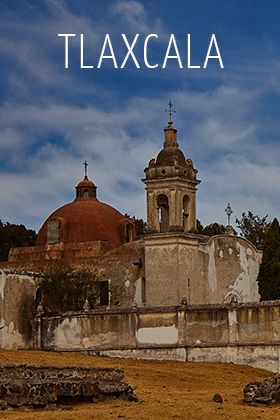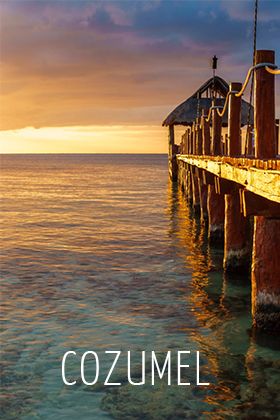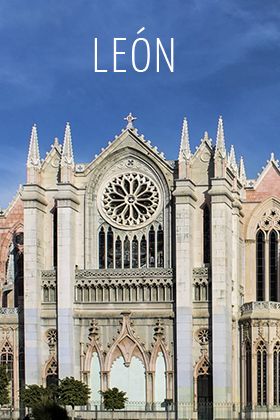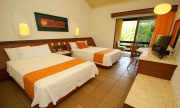About Queretaro
by: Travel by México

About Queretaro
by: Travel by México
It is said that Querétaro is, by excellence, a historical city: here would emerge the idea of a free nation, first as a hidden conspiration personified by the heroine doña María Josefa Ortía de Domínguez, and later on with the impetus of the struggle for the Independence of México.
However the history cannot escape the leyend, and both are intertwined smoothly in time and space: the natives that were already influenced by the spanish, when feeling that they were going to lose the battle that would force the inhabitants of the Cañada to give in, invoked the divine assistance of Apostle Santiago, Patron of Spain. The sun darkened, and in the starry black sky became apparent the image of Santiago riding a spirited white horse, accompanied by a great luminous cross. This caused great fear to the natives and consequently accepted their surrender, so in July the 25th of 1531 the city of Santiago de Querétaro was founded by the native Conin, a name meaning “noise”, and who when adopting the christian faith, became baptized as Fernando de Tapia.
But how was this place in the old days? As a chichimeca town, it was founded in 1446 in what was formerly called “Anda Maxel” in otomí, a name meaning “The greatest ball game”, as well as “Queréndaro” in the purepecha tongue, meaning “Place of Rocks”. Nowadays in the Sangremal hill, place where the spanish and chichimecas confronted each other, is erected the Convent of the Santa Cruz, a place where found in the gardens is a tree that grows cross shaped thorns. In that same place would be created the the First School of Fide Propaganda of America, but would serve also as headquarters and even as prison for the Emperor Maximiliano de Habsburgo, who was executed in the Cerro de las Campanas in 1867 together with Miguel Miramón, courageous Niño Heroe, defender of the Castle of Chapultepec during the Northamerican invasion. Found here, in the Cerro de las Campanas, is a small chapel built in memory of the Archeduque by the Austrian government, marking the exact place where the execution took place, as well as an esplanade with a statue of don Benito Juárez and a beautiful recreational park where located is the Museo de Sitio and an audiovisual room.
In Querétaro there are plenty of festivities and celebrations during the entire year. For example, during the month of July artistic, cultural and sport events take place because of the anniversary of the foundation of the city, and on the 25th a procession takes place with allegoric cars, music bands, people walking in stilts and short farce groups along the main downtown streets, followed by a spectacular show of fireworks. In the atrium of the Convent de la Santa Cruz, in the month of September, the coachmen perform during two consecutive days, traditional dances in honor to the Santa Cruz de los Milagros. In December the Querétaro Expo Fair with a grand show from livestock to industrial, handicraft and tourism, a multitudinous event that also pleases the visitors with the traditional charreadas, palenques, jaripeos and gastronomical samples.
Querétaro has been distinguished for having an accelerated economic growth, making way to a great quantity of commercial plazas and urban developments, but also is known to be a city of profound history that is available to all who travel on board of the tourist tramcar along the downtown streets.
Standing out is the Plaza de Armas, an outstanding square of colonial houses such as the Ecala, that of the Segundo Conde de Sierra Gorda or that of the Corregidora, which serves today as a state government office. The Church of Santa Clara, built together with the convent in the XVII century under the initiative of Diego de Tapia is famous for the altarpieces, the pulpit, the enormous carved doors and the wrought iron bars. While the Convent of San Agustín, a clear sample of the barroque art of the time, is edified with the strength of quarry, and distinguished as a space of admirable carved symetric contrasts. The beauty of this place was the reason why in 1889 it was declared as a Federal Palace, and almost a century later, after undergoing a series of works of restoration, this place is open to the public as Museum of Art. Near to this place is a building of the XVIII century, seat of the franciscan province in 1567. It served as prison for the conspirators during the time of the Independence, destined later to the School of Pío Mariano by the franciscans from 1876 to 1914. Towards the year of 1936, the Ex-Convent would be delivered to the city in order to set up the Regional Museum with the presence of the Institute of Anthropology and History in 1971.
A masterpiece that is worth admiring is the Church of Santa Rosa de Viterbo, one of the most classical expressions of barroque art, built and designed by the Architect Mariano de las Casas. Standing out are its great buttresses with inverted turns, a sunken fountain, the pulpit, the choir stand and the organ carved in wood and polished with pure gold.
Such an elegance, that lavishness that distinguished Querétaro as one of the most important cities of New Spain, continues to be up to this day an architectural legacy as artistic as notable. It would be in this city where the National Anthem would be heard for the first time in the former Theatre Iturbide, today Theatre of the Republic, a place that served as an office of congress that would give shape in 1917 to the Constitution, as well as a stage where the famous Angela Peralta sang “The Mexican Nightingale”.
It is Querétaro a beautiful city where 74 archs of the Acueduct rise, erected by the iniciative of the Marqués de la Villa del Villar del Aguila in 1726; a city where tourism will always be welcome, becoming without a doubt, one of the most enriching destinations of México.



















